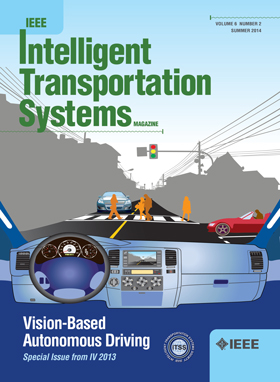Multi-Authority CP-ABE Scheme With Cryptographic Reverse Firewalls for Internet of Vehicles
IF 7.9
1区 工程技术
Q1 ENGINEERING, CIVIL
IEEE Transactions on Intelligent Transportation Systems
Pub Date : 2025-02-04
DOI:10.1109/TITS.2025.3533757
引用次数: 0
Abstract
Internet of vehicles, featured with widely distributed vehicle nodes and limited computing power, usually have high performance requirements. Because of this feature, efficient and reliable access control has raised a challenge in Internet of vehicles. Ciphertext-policy attribute-based encryption (CP-ABE) could be denoted as an efficient solution for this problem. However, directly applying traditional single-authority CP-ABE schemes may result in single-point performance bottleneck. Besides, the secrets of the whole system may be leaked if any node is attacked. To solve these challenging tasks, we proposed MA-CP-ABE-CRF, a multi-authority CP-ABE scheme with cryptographic reverse firewalls. The system is designed to grant vehicles fine-grained access control by encrypting data under vehicle attributes. Besides, load balancing of authorization in distributed systems is achieved based on the characteristic of multi-authority. Meanwhile, specific nodes are equipped with cryptographic reverse firewalls (CRFs) to prevent information leakage. As the first scheme with the above features for Internet of vehicles, the system achieves adaptive CPA-security and ASA-security. Through rigorous theoretical analysis and experimental comparison, MA-CP-ABE-CRF is proved to be highly efficient and practical.基于加密反向防火墙的车联网多授权CP-ABE方案
车联网车辆节点分布广泛,计算能力有限,对性能要求较高。由于这一特点,高效、可靠的访问控制对车联网提出了挑战。基于密文策略属性的加密(CP-ABE)是解决这一问题的有效方法。然而,直接应用传统的单权威CP-ABE方案可能会导致单点性能瓶颈。此外,如果任何一个节点受到攻击,都可能泄露整个系统的机密信息。为了解决这些具有挑战性的任务,我们提出了MA-CP-ABE-CRF,一个带有加密反向防火墙的多权威CP-ABE方案。该系统旨在通过加密车辆属性下的数据来授予车辆细粒度访问控制。此外,基于多授权的特点,实现了分布式系统中授权的负载均衡。同时,在特定节点设置加密反向防火墙(CRFs),防止信息泄露。作为首个具备上述特点的车联网方案,该系统实现了自适应CPA-security和ASA-security。通过严格的理论分析和实验对比,证明了MA-CP-ABE-CRF的高效和实用性。
本文章由计算机程序翻译,如有差异,请以英文原文为准。
求助全文
约1分钟内获得全文
求助全文
来源期刊

IEEE Transactions on Intelligent Transportation Systems
工程技术-工程:电子与电气
CiteScore
14.80
自引率
12.90%
发文量
1872
审稿时长
7.5 months
期刊介绍:
The theoretical, experimental and operational aspects of electrical and electronics engineering and information technologies as applied to Intelligent Transportation Systems (ITS). Intelligent Transportation Systems are defined as those systems utilizing synergistic technologies and systems engineering concepts to develop and improve transportation systems of all kinds. The scope of this interdisciplinary activity includes the promotion, consolidation and coordination of ITS technical activities among IEEE entities, and providing a focus for cooperative activities, both internally and externally.
 求助内容:
求助内容: 应助结果提醒方式:
应助结果提醒方式:


